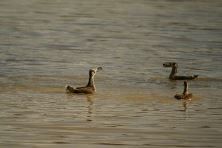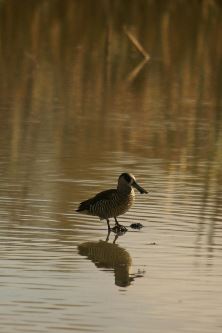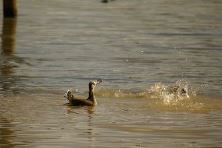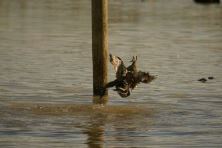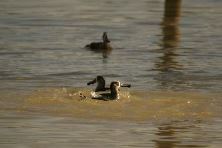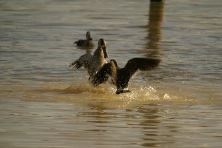
Shoppers Feedback:
Jan 17, 2017
Hello Ros,
I have now paid the invoice, but I would like to write to you just to say a big THANK YOU for getting me the Penguin!
The ChatterMate Penguin became a nice memory for me when I was in New Zealand, and I am so greatful to you for arranging so that I could have it! :-)
Thank you so much!!!!!!!!!!!
Regards,
Malin
Hi Ros,
Many thanks for your very kind email. I really appreciate your prompt reply!
I appreciate your advice regarding the decorations and customs. These are a gift for my daughter’s exchange student family so when she returns home on the weekend I will show her and see if she loves them as much as I do!
Thanks so very much again - I am truly grateful for your kind assistance.
Kind Regards
Bernadette
Ros,
Thanks again for the great customer service. It's a refreshing change!
Best regards,
Trevor
Hey Roz,
Thank you for your emails. Just loved my first order. The cute little Aussie bush critters are going to be used for an office Christmas decoration. My colleagues also liked them and talked about making an order to your site. I'll send you a photo when completed.
I'll be ordering more to send to my daughter's host family in America.
Fabulous service from you.
Kind regards,
Michelle
Thankyou. Order arrived today. One very happy grandson with his new beastly binoculars.
Regards,
Irene
- Home
- Wild Wonders
- Shop
- Aromas of Australia
- Australian Made
- Books
- Book Marks
- Christmas Decoration Sale
- Christmas Decorations
- Clocks
- Drink Holders
- Garden & Outdoor
- Gift Wrapping & Cards
- Home & Giftware
- Jewellery
- Keyrings
- New Products
- Pencils & Pen Holders
- Photo Frames
- Plush Toys
- Plush with Sound
- Sheepskin Rugs
- Stationery
- Stone Carvings
- Toys & Games
- Travel Goods
- Wedding
- Wild Figurines
- Wildlife Safety Products
- Wind Chimes
- Wine Charms
- View All Products
- Wildlife
- Australiana
- Explore
- Contact Us

Quick Facts
| Length: | 40 cm |
| Height: | - |
| Weight: | 375 grams |
| Colour: | - |
| Habitat: | Timbered areas near water. Prefers shallow, temporary waters |
| Food: | Microscopic plants and animals |
| Predators: | - |
| Status: | Secure in all states and territories in Australia |
The Pink-eared Duck is a small duck with a huge square-tipped grey bill and strongly barred brown flanks. It has a large brown eye patch on a white finely barred face. There is a small pink patch behind the eye. Upper parts are brown, underparts white barred dark brown. The upperwing is brown with a white trailing edge and the underwing linings are white, finely barred brown. In flight, there is a bold white crescent on the rump.
The Pink-eared Duck is not mistakeable for any other duck.
The Pink-eared Duck is found throughout Australia but only occasionally in Tasmania.
The Pink-eared Duck is found in timbered areas near water. It prefers shallow, temporary waters, however open wetlands support large flocks. It is a highly dispersive and nomadic species.
Pink-eared Ducks are birds of the inland swamps and will fly great distances in search of water. Huge flocks often reach the coast in dry years.
Pink-eared Ducks feed in shallow warmish waters. The highly specialised bill is fringed with fine lamellae (grooves) to filter out the microscopic plants and animals which make up the bulk of its diet.
Pink-eared Ducks often feed in head-to-tail pairs swimming in a circle, which concentrates small organisms in a rotating column of water.
Breeding can take place all year round and is dependant on floodwaters. The nest is a rounded mass of down placed in a hollow or on a stump above the water. Pink-eared Ducks usually take over nests built by other birds, especially the Eurasian Coot and the Black-tailed Native Hen. Pink-eared Ducks form monogamous, probably life-long pair-bonds. The female incubates the eggs, and both parents brood the young.
Last Updated: Wednesday 8th January, 2014
BirdLife Australia - www.birdlife.org.au
BUSH e-TELEGRAPH
Signup for our monthly newsletter the "e-Telegraph"
Quick Links
Home | The Beginning | About The Land Down Under | Wild Wonders | Advertise on Wild Wonders | Christmas Decoration Sale | Christmas Tree Decorations | Drink Holders | Plush with Sound | Stone Carvings | Wildlife Wine Charms | Freebies | Australian Wildlife | Help Our Wildlife | Australiana | Photo of the Month | Explore The Land Down Under | Contact Us | Legal Notices

